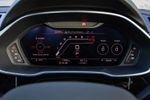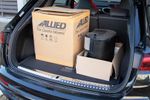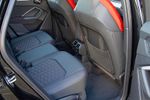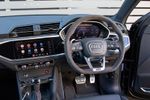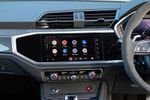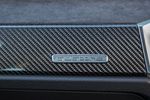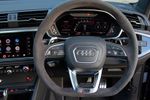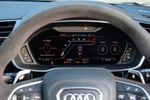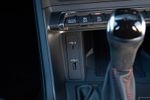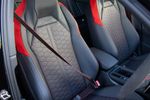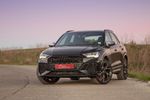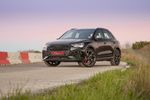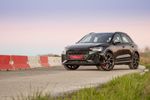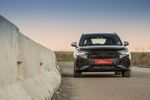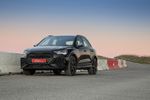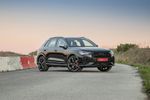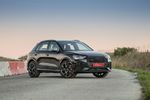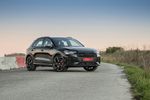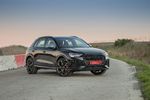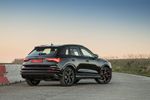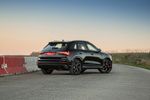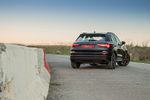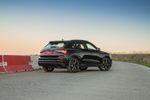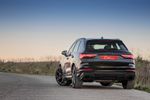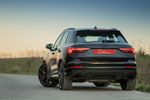Audi has taken the potent 2.5-litre 5-cylinder turbopetrol motor from the RS3 and TT RS and shoved it into a Q3 to produce this: the RS Q3. Is it an overwrought (and -priced) family car or a practical performance machine for just over R1.1 million? Whichever way you see it, we struggled to keep the smiles off our faces…
We like: Exceptionally quick, addictive acceleration, thundering engine note, daily usability.
We don’t like: As expected, it’s thirsty when you access its full performance potential, pricey options
Fast Facts:
- Model Tested: Audi RS Q3 quattro
- List Price: R1 116 000 (before options)
- Engine: 2.5-litre 5-cylinder turbocharged petrol
- Power/Torque: 294 kW/480 Nm
- Transmission: S tronic dual-clutch gearbox
- Fuel efficiency: 9.0 L/100 km (claimed)
- Performance: 0-100 kph in 4.5 sec (claimed)
- Load capacity: 530-1 525 litres
What is the Audi RS Q3?
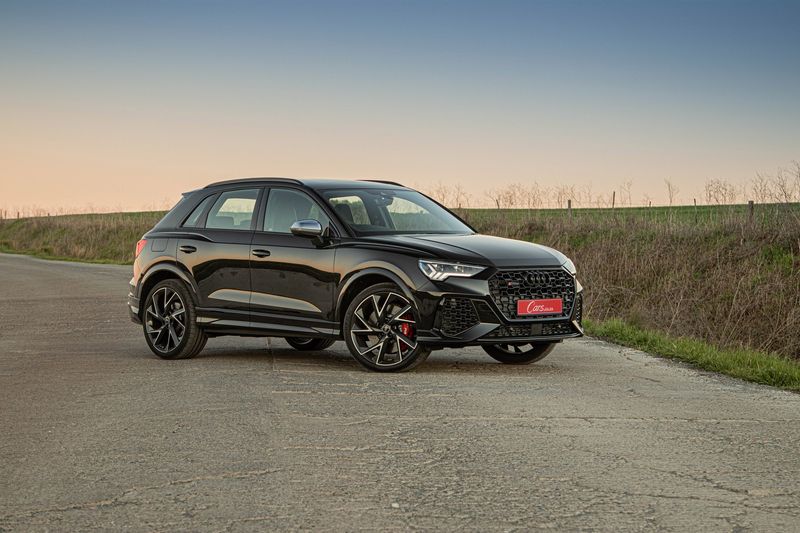
What happens when you take an Audi Q3 – a competent premium crossover that offers a pleasant driving experience, a modern high-tech cabin and a fair dose of practicality – and wedge the 2.5-litre 5-cylinder turbopetrol from the Audi RS3 Sportback/Sedan and TT RS into its engine bay? It sounds like a brazen, almost Frankensteinian, attempt to blend the best traits of a performance- and a family car.
Well yes, that’s exactly what the RS Q3 is. It’s not Audi’s first attempt at making a weapons-grade family car; its predecessor – the 1st-gen Audi RS Q3 – was revealed at the 2013 Geneva Motor Show and came to South Africa in 2014, armed with a 228 kW/420 Nm 2.5-cylinder turbocharged petrol engine. Back then we thought it was a wild but charming machine, hindered only by its overly firm ride quality.
Now we have an all-new generation of Q3 and, consequently, an all-new RS Q3. Impressively, the model’s performance has been dialled up even further – it’s now a more potent offering in every respect.
The Audi RS Q3 is available in 2 derivatives: quattro and Sportback quattro. The primary difference between the models is the body style and exterior detailing. The Sportback version offers the coupe-SUV look, while the quattro (tested here) is more traditionally styled. There’s not much between them otherwise, but the RS Q3 Sportback does command a fractionally higher premium (it’s R34k dearer).
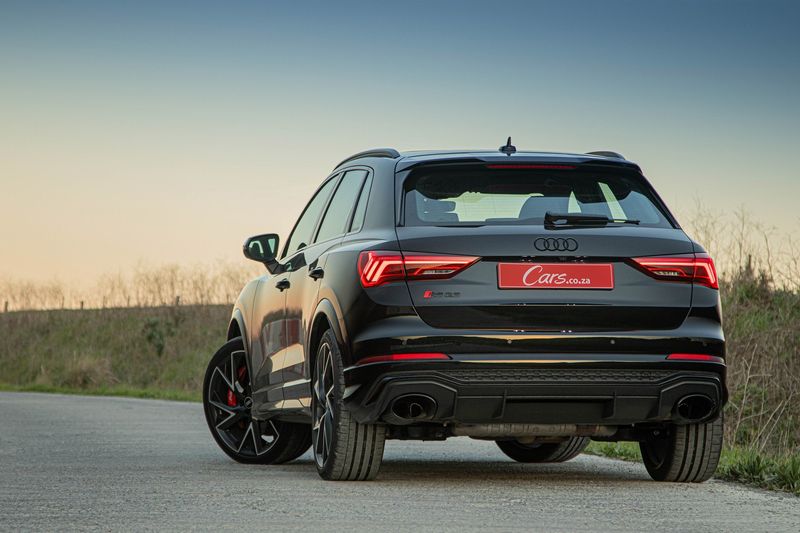
Which models are rivals to the RS Q3?
At the time of writing, Mercedes-AMG had not yet launched its GLA 45 S in South Africa, but the Three-pointed Star’s local website did hint that its arrival was imminent. With peak outputs of 310 kW and 500 Nm from a 2.0-litre turbocharged 4-cylinder petrol engine, the GLA 45 S is the Audi RS Q3’s arch-rival.
BMW offers the X2 M35i xDrive, which is powered by a 2.0-litre turbocharged 4-cylinder punching out 225 kW and 450 Nm, for a bit less money than the Audi RS Q3. Ingolstadt’s offering comfortably outguns the Bimmer in terms of outright performance and practicality, however.
If performance isn’t that important, you could always consider a fully-loaded Volvo XC40 T5, but with 185 kW and 350 Nm, the Swedish offering won’t come close to matching the sheer pace of the Audi.
Whereas the entry-level Porsche Macan is more affordable than the RS Q3, it’s much less powerful. To move up to the comparable 280 Nm/450 Nm Macan S, who will need to shell out close to R1.3 million.
Finally, Volkswagen will launch its Tiguan R in South Africa in early 2022. It’ll come to market with a 2.0-litre 4-cylinder turbopetrol motor with 235 kW and 420 Nm driving all four wheels. We don’t know what the R model will cost yet, but we estimate that it will have around the same (or slightly lower) asking price than the Audi RS Q3.
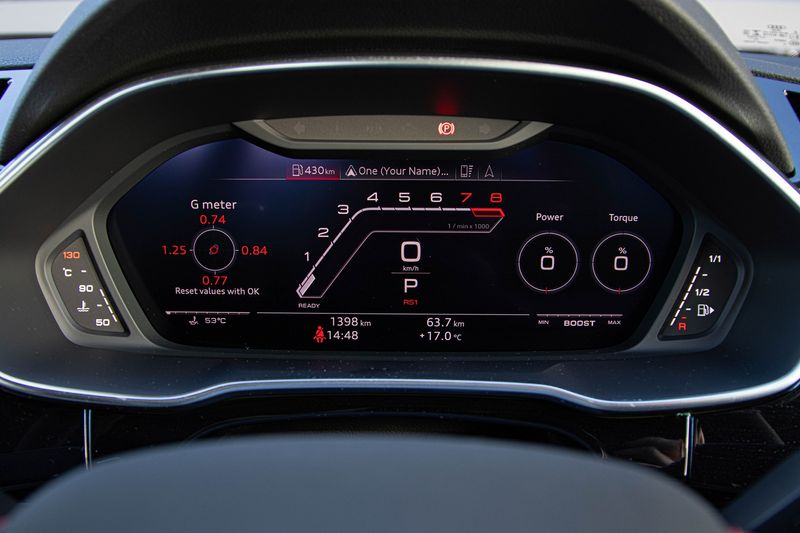
How does the RS Q3 drive?
Audi’s compact RS models share a characterful engine: it’s a 2.5-litre inline 5-cylinder turbopetrol motor, which, in its current state of tune, produces peak outputs of 294 kW and 480 Nm of torque.
It’s quite remarkable to see an engine of this vintage still being produced (its earliest incarnation debuted in the previous-gen Audi TT RS in 2009), because ever-stricter emissions laws are ushering most performance-oriented ICE powerplants to the exit… Our outfit for the inevitable funeral of this 5-pot has already been chosen; it’ll be a truly sad day for the car community when the motor’s time is up.
When you stab the Start button, you’re greeted with a subtle rumble. It’s polite enough to not annoy the neighbours, yet there’s enough urgency to the note to remind you this is no ordinary Q3 derivative.
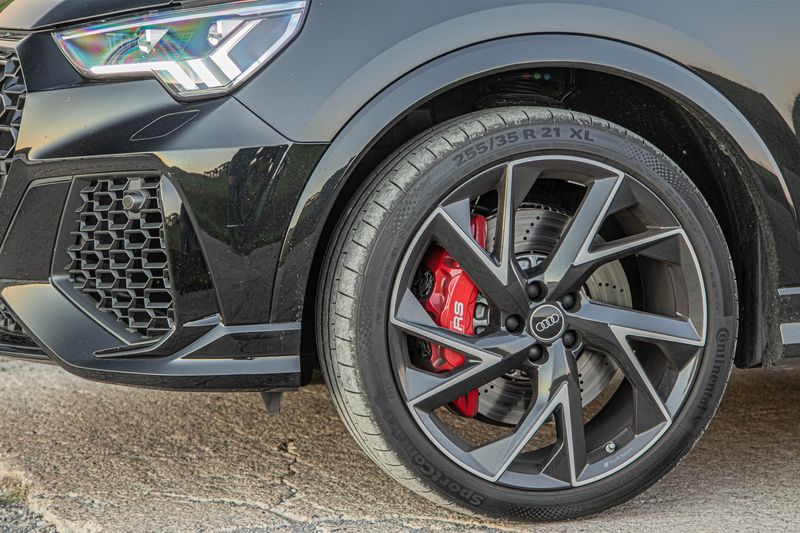
Engage Dynamic mode, switch the stability control- and transmission settings to Sport, then point the Audi RS Q3 at the horizon. Flatten the accelerator pedal with your right foot (while holding your left foot hard on the brake pedal) and you’ll feel the Ingolstadt-based brand’s smallest performance SUV tense up as its Launch Control system primes itself for action.
Then, when you release the brake pedal, there’s a brief pause before the Audi RS Q3 positively catapults down the road. Audi claims the model can accelerate from 0 to 100 kph in 4.5 sec, but we could not achieve a time of better than 4.7 sec. Still, that sort of 0-100 kph time is blisteringly quick by family-car standards and the best part is the evocative soundtrack. However, compared with other 5-cylinder Audi Sport models, the RS Q3 tones down the aural drama. Perhaps stricter emission- and noise regulations are to blame for that, but at least the “thrum” is still there and more prominent under full acceleration.
Why is the 5-cylinder motor so beloved? Because it produces a purposeful and urgent “warble”; the exhaust note of the S3’s 2.0-litre 4 cylinder mill is, by comparison, less mechanical/more synthesised. When you engage Dynamic, the RS Q3’s exhaust system adjusts to produce a notably deeper tone. Of course, each gear shift is accompanied by a percussive pop from the Audi’s gaping oval tailpipes.
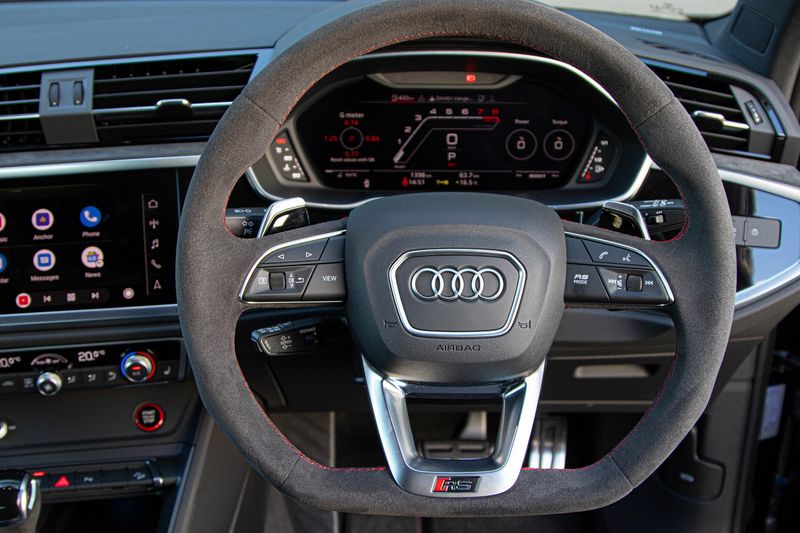
Don’t be blinded by the RS Q3’s astonishing straight-line performance, however – thanks to quattro all-wheel-drive, which apportions torque dynamically to the 21-inch wheels that can make the best use of it, Audi’s performance family car can corner with tenacious sure-footedness… at rather heady velocities. The vehicle’s grip reserves are so high that one would need to drive recklessly fast to exhaust them.
Even on cold, damp roads, the RS Q3’s tyres exhibited very little lateral slippage; if you coax the RS Q3 into bends with too much speed, it will respond with a touch of manageable, safety-first understeer.
Meanwhile, you can use the steering wheel-mounted gearshift paddles to actuate manual gear changes; we found the transmission tended to change up quickly in response to user inputs, but sometimes there was a small hesitation before it would execute a down change. When in doubt, let the vehicle’s gearbox shift by itself!
If you make the 5-cylinder scream like a deranged sports fan (in other words, at maximum volume) more often than not, you’ll pay dearly at the fuel pumps. At the end of the RS Q3’s tenure in our test fleet, we saw an indicated consumption figure of 12.5 L/100 km. We do believe that Audi claimed figure of 9.0 L/100 km is a bit optimistic, but it’s definitely possible to use less petrol than we did!

For all its performance potential, can you live with the Audi RS Q3? Of course, you can. One of the main benefits of modern performance vehicles is that they come with switchable drive modes. The mode you will use most often, such as when you’re commuting, is Comfort, when the engine responsiveness is dialled back, the exhausts are muted and the transmission changes gears smoothly and casually.
And the best part? Compared with its predecessor, the RS Q3’s ride quality is relatively forgiving; considering the model rides on large 21-inch alloy wheels shod with low-profile tyres, the optional adaptive dampers (which form part of the extra-cost Adaptive Chassis Control package) make the Audi’s suspension feel notably more pliant. It’s a R18k option that’s well worth considering, if not a must-have.
What’s the RS Q3 like in terms of Comfort & Tech?
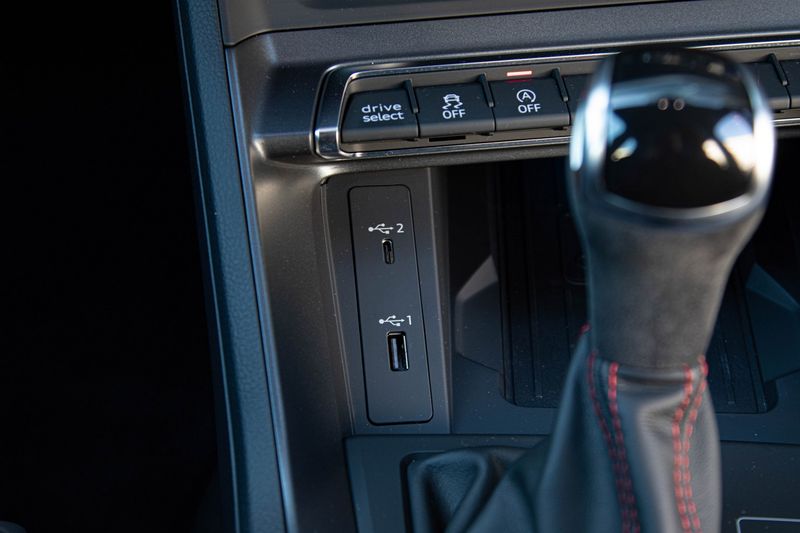
The test team deeply appreciated the Audi RS Q3’s adaptability/range of customisation. If you dive into the Drive Select menu and select Individual, you can personalise the setup to your heart’s content. For example, you can set the adaptive suspension, powertrain and steering to Comfort while leaving the intensity of engine sound cranked all the way up. Simply find your favourite combination and save it!
This preset is available via the Audi RS button on the steering wheel. We tailored RS1 for everyday driving, with all systems but the engine sound set to Comfort, but RS2 was set up for optimal sportiness.
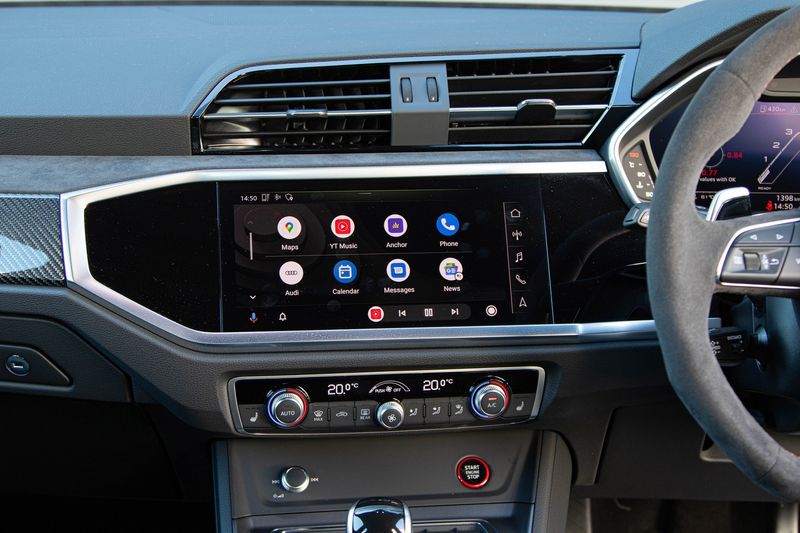
Contemporary Audi models are well-executed luxury products in many respects. By virtue of being a flagship offering, the Audi RS Q3 is comprehensively equipped, and its asking price reflects that. Many may baulk at the idea of paying R1 million for a small SUV/family car, but the reality is new-car prices have shot up dramatically over the past few years and, to be brutally honest, this is no ordinary SUV.
Engine and performance aside, the Audi sports a very special cabin – a subtle reminder that this is an RS model, not a specced-up run-of-the-mill Q3 derivative. The graphics of the Audi Virtual Cockpit are model-specific – there are quite a few performance readouts available like G-force, tyre-pressure sensors, performance data and more. You can customise your viewing experience to your heart’s delight.
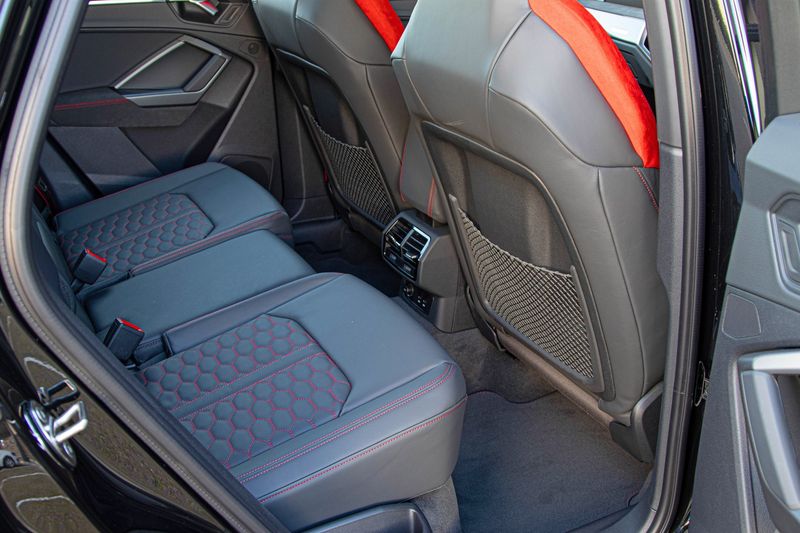
Standard features include the brilliant Audi Matrix LED headlights, a smart-looking digital instrument cluster (Virtual Cockpit), 21-inch wheels, sports seats, a Sonos audio system, a reverse-view camera, dual-zone climate control, RS logo puddle lamps, cruise control, auto lights and -wipers. Android Auto/Apple CarPlay compatibility is available too.
Our test unit came loaded with options, so much so that it added R192 880 to the RS Q3’s asking price. These ranged from add-ons such as a trailer hitch (R11k), a panoramic sunroof (R20k) and a wireless charging pad (R5k), to visual upgrades including the carbon-like trim inserts (R5k), diamond-turned alloy wheels (R6k) and red RS interior styling package, which includes the accented seatbelts (R17k).
Other noteworthy options include a top-speed limiter increased from 250 kph to 280 kph (R28 900, which seems a pointless option in a country where there aren’t any autobahns with delimited sections), a 360-degree camera (R7 500), the aforementioned adaptive chassis control (R18k), and some semi-autonomous safety in the form of lane departure warning/lane change assist for R11k.
Verdict

Is there any logic to wedging a 294 kW/480 Nm engine into a family car, even a premium all-wheel-drive one? If your vehicular requirements end with safe, practical premium family transportation, then no.
But then, this is not really an Audi Q3 in the strictest sense. The RS Q3’s target clientele is very specific. If you have your eye on a compact performance car (such as the TT RS or the upcoming Audi RS3 Sportback/Sedan, for example), but fear that your partner will complain about those cars’ limited practicality or that your mates may brand you as an immature speed freak, then the RS Q3 offers you the thrills without the drawbacks, with some adulting thrown in with a usable load bay and decent rear legroom. Did we not mention the test unit’s big performance envelope and addictive in-gear soundtrack?
Despite missing some of the visceral fizz-pop of its fellow 5-cylinder RS siblings, the RS Q3 makes a strong case for itself as a fast-yet-sensible premium family car (provided you spec it wisely). Petrolheads can thank their lucky stars some car companies are still willing to create such wacky models… This will probably be the last RS Q3, unless Audi finds a way to extends the life of its legendary 5-pot motor.

